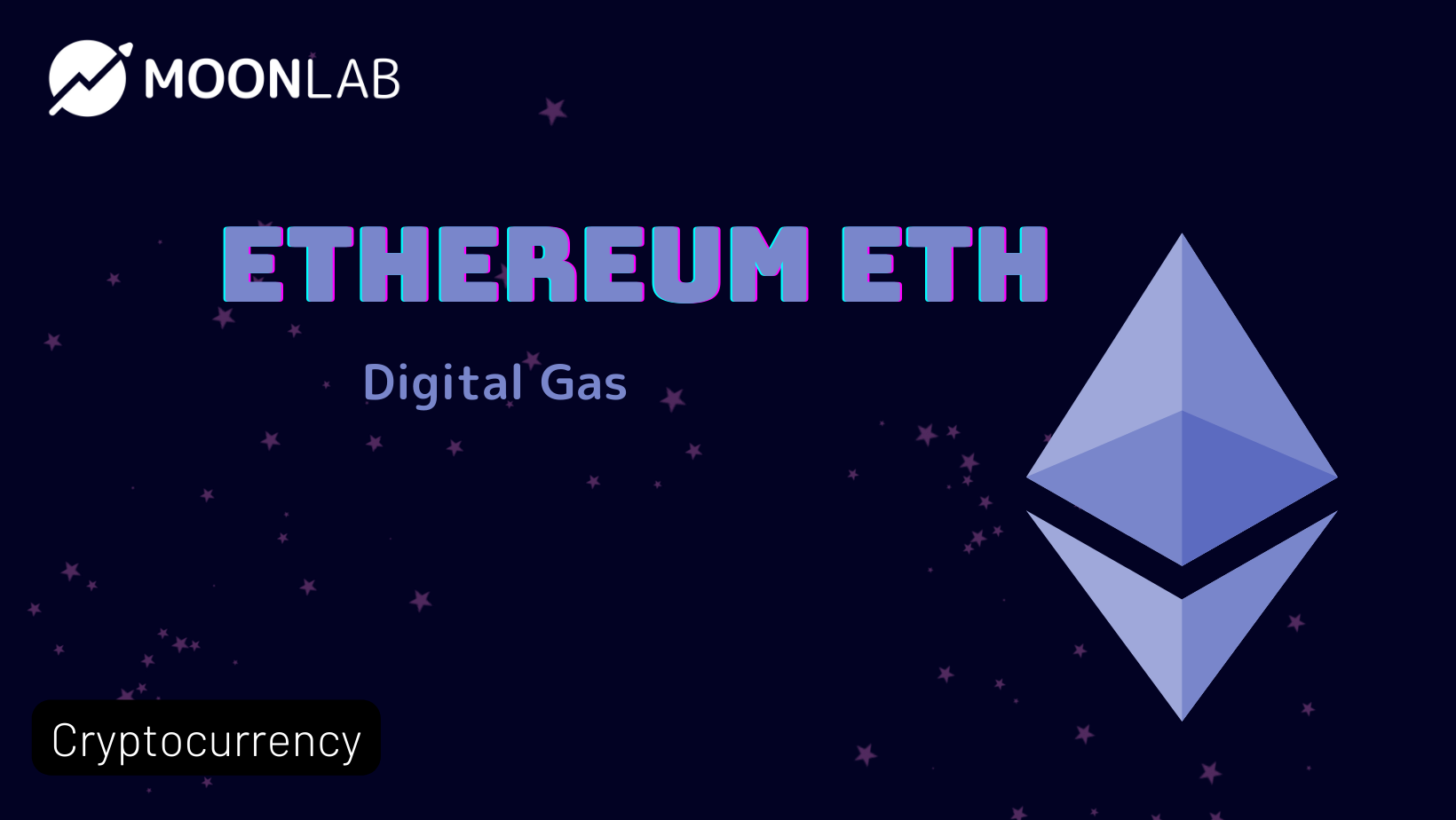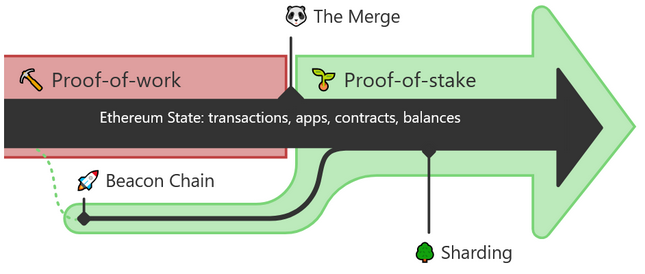
The Merge
What Is The Merge?
The merge refers to implementing a new consensus mechanism on the Ethereum network. It is the most ambitious upgrade to the network since its inception.
Currently, Ethereum’s consensus mechanism is Proof of Work (PoW). PoW consists of miners spending resources (computing power and by extension electricity) to calculate a block hash and earn the right to mint the next block. Minting a new block awards the miner with a block reward plus transaction fees.

Source: Ethereum.org
The Beacon Chain represents the Proof of Stake (PoS) consensus mechanism that has actually been running in parallel to the mainnet for almost two years. With PoS, the ‘miners’ are known as ‘validators’, and instead of mining new blocks via heavy computation they stake Ether tokens to get a chance to bundle transactions into the next block. The validator is still rewarded with transaction fees.
At the time of the merge, a block hash difficulty will be introduced that makes PoW impossible, and the Beacon Chain will take over with PoS as the sole consensus mechanism.
When Is The Merge?
The merge is not set for a specific time, but instead it will be triggered at a specific block difficulty. Block times have slight variation, so the best we can do ahead of time is get a probabilistic range of time that it will occur in.
When mainnet reaches the total terminal difficulty (TTD) of 58750000000000000000, the merge will commence. This is expected to happen on September 14th, give or take a few days.
Implications of The Merge
We can expect the merge to be seamless. The merge has been tested with all of Ethereum’s testnets - most recently Goerli - and has gone off successfully each time. Both end-users and companies with products on the network should notice no difference.
The only difference will be for miners, who will either become validators by staking 32 Ether or cease to support the network.
There is a possibility that some miners will fork the network and attempt to maintain a PoW version of Ethereum. Miners are currently profiting from their services, and have a capital expenditure (CAPEX) to make up for. However, if they fork the network it is likely nobody will use their PoW version, and the PoW-Ether they acquire will therefore be worthless.
Even if someone forks the network, end users don’t need to do anything. Beware of any entity claiming you need to take action during this event, as it is likely a scam.
The inflation rate and the environmental impact will be drastically improved after switching to PoS. The inflation rate will decrease from ~14,600 ETH per day to ~1,600 ETH per day; due to the variable amount of Ether burned during transactions, we’re likely to see the token become deflationary on a more frequent basis.
As for environmental impact, the amount of power required to support the network will decrease by more than 99.9%.

